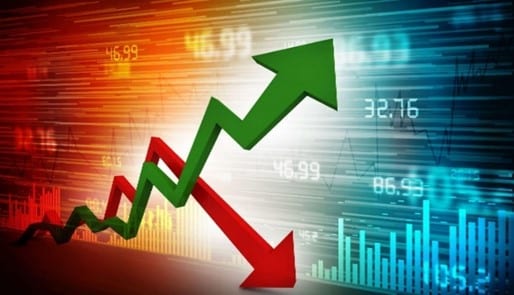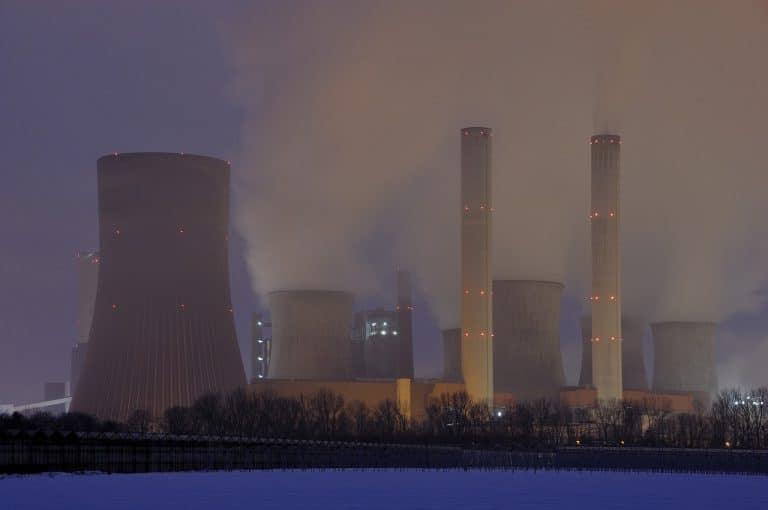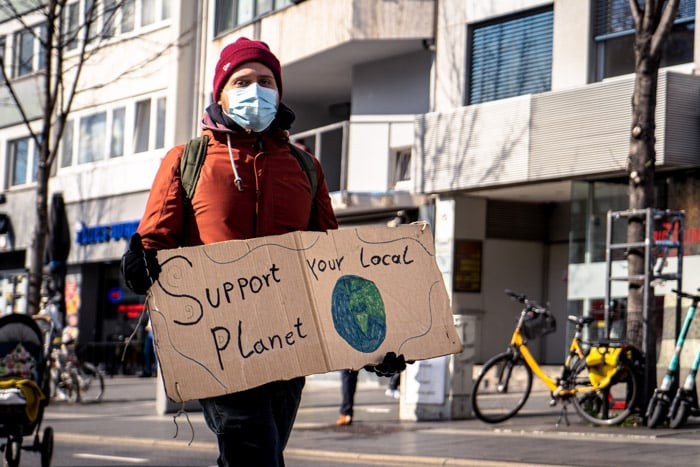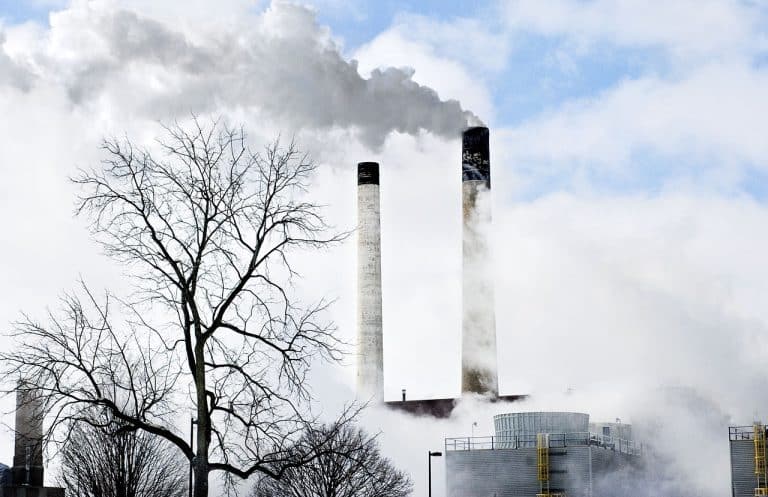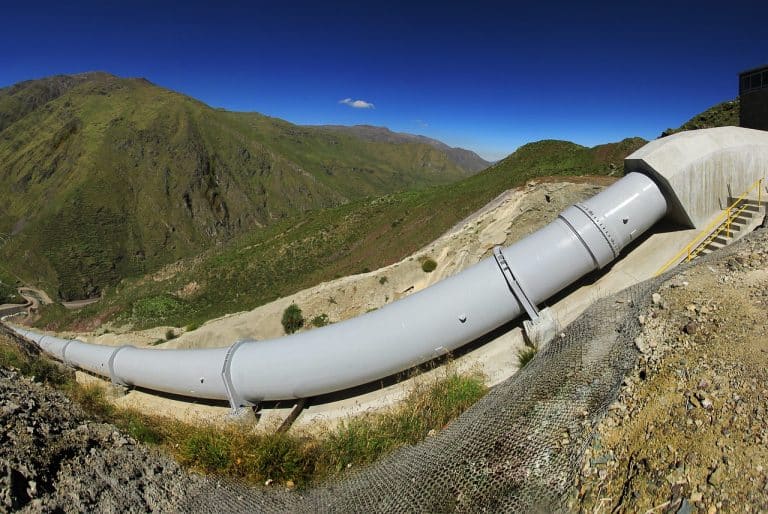It can be easy to assume that blockchain is bitcoin, and bitcoin is blockchain. After all, bitcoin dominates the crypto airwaves; it makes a certain amount of sense to assume that blockchain begins and ends there.
The reality is far different. Bitcoin is important, to be sure, but only as a symbol of far greater things to come. Like Ford with the early automobile industry; even if Ford Motors had failed in the 1930s, or after WWII, or even in 2008 – the broader automobile and manufacturing industry would have been largely unaffected.
Blockchain powers Bitcoin, and it’s the success or failure of blockchain technology that will ultimately have a far greater impact than any one cryptocurrency.
Executive Summary
1. What is a Blockchain?
A blockchain is a digital ledger of transactions that can’t be tampered with by any one entity because of its decentralized design. A blockchain is made up of blocks, which are chained together cryptographically. Each block contains a hash pointer (a number) linking it to a previous block, a timestamp, transaction data, and fees.
The combination of these components – the hash pointer, timestamps, and transactions – make up a record or block.
These records are linked like pearls on a string, forming a chain. This chain gets longer every time a new block is added, making the blockchain bigger over time.
Publicity and security
The prospect of a seemingly-endless stack of blocks towering into the digital heavens might be a bit intimidating, but there’s an immense amount of real-world value in it.
Because new block are inextricably linked to the old ones, old data can’t be changed. Previous entries into the ledger are therefore immutable. In addition, the total blockchain functions as an authentic record of all transactions on the chain. The actions of individual wallets, or the sale of individual items, can be easily traced through the blockchain.
Each crypto wallet has a public address and a private key. Users access the blockchain through wallets. The address receives cryptocurrency and other digital assets, sends them on, and can store them, and it’s the address that’s identified in the distributed ledger.
At the same time, private keys secure each individual wallet.
Users can hold assets securely in a wallet while the wallet’s address is publicly visible. The idea is similar to a postal system. Your postman knows where you live and how to pick up and deliver mail, but he doesn’t know what you do at that address.
Decentralized control
Blockchain structure raises a couple of important questions. With everything visible to the public, how are blockchains secured? What guarantees trust in the network?
One way in which blockchains can guarantee security and ledger accuracy is by limiting access. Blockchains can be permissioned or permissionless. Permissioned blockchains require users to obtain special permissions before they can use them. Blockchains designed to be used by one institution are a good example – trust is guaranteed by controlling who has access.
On the other hand, public blockchains face the very real problem of guaranteeing security and trust with a huge number of distributed users, including at some potential bad actors. That’s where cryptography comes in. The cryptographic hash – an algorithmically-generated number – secures each new block on the chain. Change the block, and you change the hash. And if you change the hash, you invalidate the chain, and the change is instantly viewable.
Cryptography guarantees security despite (and perhaps due to) being publicly visible. The longest-running blockchain in the world illustrates this point clearly. It isn’t Bitcoin, or even some private Ivy-League pet project; it’s a simple cryptographic hash published every week in the classifieds of The New York Times. Every week since 1993. Participants in that particular blockchain use that information to validate transactions over the previous week (in this case, security seals issued by a particular company).
The use of cryptography solves one trust-related problem, but it raises another: who, exactly, is allowed to make changes to the chain?
Nodes, mines, and stakes
Nodes are the control points of the blockchain. With a decentralized structure, someone has to validate the chain of transactions, add new transactions to a block, and add the block to the chain. If only one person or entity controls that process, the blockchain isn’t decentralized at all. But if too many entities control it, then there’s little chance for transactions to be processed quickly or efficiently.
In the case of the NYT blockchain, there’s one node – the classified ad itself. Transactions are processed weekly – fast enough for that company’s purposes, but not fast enough for anything like a high-performance digital blockchain.
Using a handful of select nodes solves part of that problem.
Everyone can participate in the chain itself (permissionless), but some kind of entry point is set for nodes. Usually this involves requiring nodes to have certain assets, whether technical (hardware or technical know-how) or in the form of digital assets (typically the token for that particular blockchain).
Nodes govern the chain. The exact method they use is known as the consensus mechanism. Currently, there are two primary consensus mechanisms in widespread use: Proof-of-Work (PoW, aka mining ), and Proof-of-Stake (PoS, or simply staking).
Proof-of-Work requires the use of real-world hardware in order to solve an algorithmic equation and win the right to create the next block on the chain. These chains tend to be energy-intensive, often requiring mass amounts of hardware, and are competitive – miners are essentially fighting each other over the solution. The most notable PoW chain is, without a doubt, Bitcoin. Ethereum is another well-established PoW chain.
Proof-of-Stake selects Validators who amass a stake of digital currency or tokens. The greater the stake, the more likely the Validator will be to win the block. PoS is less a fight, and more of a race. But it’s not a fair race; the greater the stake, the farther down the track you get to start.
Having said that, there’s always an element of chance, and even smaller stakes might occasionally win the block. Most new blockchains are PoS, as it lends itself to being more easily scalable than the PoW consensus mechansim.
Notable examples include Cardano, NEAR, and Ethereum again. The Ethereum network is a mixed bag; it’s a current PoS chain, that nevertheless still has staking options as it prepares to transition to a PoS mechanism in the near future.
Use-cases: Blockchain in Real Life
Enough technical details. What does the blockchain have to do with the real-world? What makes it more than just an unusually technical thought experiment?
Most importantly, what does it have to do with carbon credits?
Blockchains provide two crucial benefits with real-world uses.
Blockchains allow the coordination of large groups of disparate users.
And, perhaps even more importantly,
Blockchains can guarantee ownership.
The whole idea of a distributed ledger is to tie public addresses, and by extension, shared assets, to individual accounts without sacrificing privacy to a central authority. In theory, this can be done with almost any asset imaginable. Digital currencies are the obvious starting point, but blockchains can also be used with data. That’s all a transaction is, of course, so the entries in a distributed ledger don’t need to be simple sales. They can be data points, non-fungible (unique) tokens tied to real-world or digital assets, or anything else.
The application to carbon credits is especially promising. In a global carbon market beset by problems of quality assurance, the blockchain offers the potential to tie one credit to one project. And that’s just a starting point.
The Crypto Carbon Ecosystem
In their simplest form, blockchains are distributed ledgers for digital information. In an information-driven age, that means that almost any bit of information could, at least in theory, be linked to a blockchain.
Cryptocurrencies still draw the lion’s share of media attention and investor interest. But as the crypto world matures, developers have begun to apply blockchain to one of the other hot markets of recent years: carbon credits.
The idea is simple.
Carbon offsets are a unit of measure, certifying that a particular action, project, or thing has removed the same one metric tonne of CO2. One credit = one tonne. The math is simple, but applying it to the real world proves challenging.
Measurement – how do you measure how much CO2 a certain set of actions will remove, before it even does so? This can be especially complicated when you add in living organisms, such as trees, as is teh case for the majority of nature-based offsets.
Verification – even if you can measure things accurately, how do you verify that the set of actions did actually result in a measurable offset?
The blockchain can, in theory, help with both of those issues by linking offsets to blockchain-based cryptocurrencies or tokens. The tokens help to incentivise verification, while tokenizing offset projects can ensure correct measurement.
The emerging carbon crypto world is dominated by a number of trends coming together at once. Not all are directly aimed at tokenization. Here are three of the biggest trends that form the crypto carbon ecosystem.
Trend 1: Carbon-friendly Crypto
The OG cryptocurrency, Bitcoin, employed a Proof-of-Work consensus mechanism. That mechanism is well-known for being energy-intensive and therefore not particularly environmentally friendly.
Just how unfriendly? It’s hard to nail down for certain, but studies in 2019 put Bitcoin mining as responsible for 22 million metric tonnes of CO2e, roughly the same amount of CO2 emissions as the Netherlands. A significant amount, for sure. And it’s worth noting that even crypto-friendly news sources place recent emissions for 2020 and 2021 even higher – 36 million tonnes and 41 million tonnes, respectively.
However, even the higher numbers pale when compared to global emissions. As a number of outlets noted recently, Bitcoin mining accounted for less than 0.10% of global CO2e. Far less, even, than the CO2e produced by mining and printing traditional fiat currency.
Regardless, the idea of “carbon-hungry crypto” has stuck, particularly with Bitcoin. The result has been to push the crypto world towards a more carbon-friendly approach. Sometimes that takes a particularly mundane form, such as Elon Musk dropping Bitcoin payments and then accepting Dogecoin.
In other cases, it can mean developing entirely new ecosystems around more carbon-friendly blockchains. The recent increase in Solana’s exposure owes something to its reputation as a carbon-neutral blockchain. And the industry-wide turn towards Proof-of-Stake instead of Proof-of-Work can be attributed to the former’s more eco-friendly consensus mechanism.
Trend 2: Tokenized Carbon Offsets
The global market for carbon offsets shows no sign of slowing down, and is seen to be worth billions by the end of the decade. A market growing so fast, and so widespread across the globe, poses unique challenges in verifying and enforcing offsets.
Tokenization answers some of those challenges. Non-fungible tokens are by their very nature unique. That allows some crypto carbon projects, like Moss, to issue NFTs for particular projects or even particular pieces of offset projects. The Amazon NFT by Moss is one of many examples; a far splashier one is the Rimba Raya NFT which sold for $70,000. That’s a single carbon offset, for a price that’s beyond current market value.
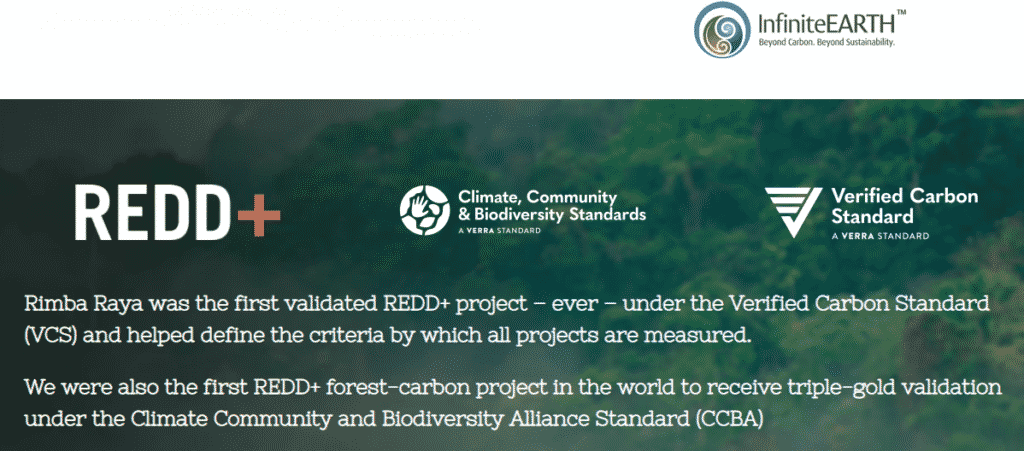
More down-to-earth NFT offset projects include the much-anticipated Save Planet Earth effort, the first to incorporate industry-leading Gold Standard offset verification into its NFT schemes.
Most of these efforts are in the early stages, and there’s little track record on which to assess their performance. But the ability to link carbon offsets to a blockchain offers a solution to a number of VCM problems, such as double counting credits. That promise alone will be enough to drive the NFT offset trend even further.
Trend 3: Blockchain-powered Carbon Exchanges
Carbon NFTs and tokenized offsets are often sold on blockchain-powered carbon exchanges. Abu Dahbi reached carbon neutrality by purchasing offsets on AirCarbon Exchange. The exchange offers offsets from around the globe, but tokenizes them on its own exchange. AirCarbon follows the same model as a traditional commodities exchange to facilitate carbon trading.
Nor is AirCarbon the only game in town. Some of the upcoming efforts follow all three major trends at once: Cambridge University’s proposed carbon exchange will be built on Tezos, another eco-friendly PoS blockchain.
Other projects often involve aspects of each trend. The CryptoCarbons NFT project produces art-inspired NFTs that are linked to already-generated offsets. But the project also allows users to request custom NFTs created just for them, and linked to a specific number of offsets.
Major crypto exchanges, like Binance, Coinbase, and others, may sell carbon-related tokens without being a dedicated crypto carbon exchange. Some of the biggest crypto carbon projects, like Klima, Toucan, and others, are only available on these centralized exchanges.
The crypto world is more aware of the need to be eco-friendly. This has led to an ecosystem primed to accept ambitious carbon offset NFT projects and tokenized offsets.
Leading Carbon Projects
Harness the blockchain, verify carbon credits, and solve two problems with one cutting-edge stone. All the projects on this list promise some variation on that idea; the only challenge is putting everything into practice in a market-friendly, cost-efficient way.
Here are current carbon crypto projects that are generating buzz and drawing some attention. Not all of them are equally successful, and few have established anything like a long-term track record. But all of them offer
Moss
Moss is two projects in one: a popular token (MCO2) and a climate-based NFT project. Both projects rely on the concept of tokenization to incentivize carbon offset production and carbon reduction.
The MCO2 token is available as an ERC-20 token on popular exchanges such as Coinbase. Purchase of the token (trading at $11.46 at time of writing) funds carbon offset projects. Most are based in and around the Amazon rainforest.
Moss doesn’t administer offset projects directly. Instead, they source high-quality offsets from other providers and tokenize them. Each project results in a given amount of offsets; Moss produces a set amount of tokens based on the projected offsets. One MC02 token = an offset for one tonne of CO2.
By burning MC02 tokens, Moss locks in offset projects permanently, reducing the overall supply of offsets in the market and boosting the price of remaining offsets.
The Moss Amazon NFT project operates a bit differently. Moss buys portions of the Amazon that are at-risk for deforestation. That land is then divided into 1-hectare portions, each roughly the size of a football field. The rights to those portions are digitized and tokenized as NFTs (Non-Fungible Tokens). Each NFT is unique and tied to a unique piece of property.
The Moss Amazon NFTs are actual land sales; proceeds from the sales fund further purchases, with 30% of the proceeds going to a preservation fund. That fund pays for patrolling and physically protecting the Amazon NFT holdings.
Moss distinctives:
- Amazon NFT based on actual ownership
- Due diligence for purchase and enforcement
- Part of the Celo Reserve, supporting a climate-based stablecoin (cUSD, cEUR)
- Brazil-based
KlimaDAO
Read the documentation.
KlimaDAO is nothing if not ambitious. Built on the common crypto carbon model of tokenized carbon offsets, Klima is also a DAO. As a Decentralized Autonomous Organization, KlimaDAO aims to boost the price of offsets on the VCM. This is done by purchasing carbon offsets, tokenizing them, and then selling or burning them to influence the market.

What sets Klima apart is its stated goal to be a carbon-backed currency, rather than simply a marker for credits held in reserve. To that end, all KLIMA tokens are backed 1:1 by reserve holdings in BCT, tokens issued by Toucan (see the next review).
Put more simply, to mint more KLIMA tokens (and increase supply), KlimaDAO needs to lock away BCT (Basic Carbon Tonne) in the treasury. KLIMA is backed by one BCT 1:1, and BCT is pegged to real-world offsets. Klima’s treasury functions as a blackhole for BCT and carbon offsets, removing them from the market and pushing the carbon price higher.
The DAO structure allows holders of KLIMA to take part in Klima’s governance. Holders can propose new measures and vote on their passage.
KlimaDAO Distinctives
- DAO structure and governance
- KLIMA as the currency of a new, carbon-based ecosystem
- Pegged to the BCT
Toucan
It’s not enough to describe Toucan.earth as a crypto carbon project; Toucan is more about bringing a number of related projects together, each with their own distinctives.
Toucan helps bridge carbon credits on-chain. Toucan links the Web3 architecture to the decarbonization push. Put another way, Toucan forms the base of a new, carbon-focused Web3 stack.
The core of Toucan’s project is the TCO2, which simply stands for Tokenized CO2. Each TCO2 represents one verified, real-world carbon credit. TCO2’s are semi-fungible, with unique information about each project encoded on-chain. The tokens are Verra verified, linking Toucan to one of the premier carbon offset standards.
The bridging process is complete once the BatchNFTs are approved by a Toucan verifier.
Approved BatchNFTs can then be fractionalized, creating TCO2 tokens. TCO2 tokens can be deposited into Toucan carbon pools, with depositors receiving carbon reference tokens like BCT in return. These pools aggregate liquidity and the carbon reference tokens provide a carbon building block for DeFi and ReFi developers.
Most projects planned for the Toucan stack won’t use the TCO2 directly. Trading TCO2 tokens one-for-one isn’t always possible, simply because the projects each token represents are different. To achieve the necessary liquidity for market projects such as Klima, the TCO2 tokens are fractionalized and pooled.
The first Toucan pool was the BCT pool, with Klima being the first user. The pools are gated, meaning each TCO2 token must have specific attributes to pass the gating criteria. Toucan and Pool Party members are able to set these factors for gating.
Toucan forms the foundation for a Web3 carbon crypto stack. Projects like KlimaDAO build on that stack. Tokenized carbon credits are the key.
Toucan.earth distinctives
- TCO2 token
- Token pooling and gating; BCT token
- Development of a Web3 carbon crypto stack
SavePlanetEarth
Read the whitepaper.
SavePlanetEarth’s self-description captures it all: a “carbon sequestration crypto project.” Structurally, SavePlanetEarth shares similarities with the Toucan/Klima project. The base of the project is tokenization of verified carbon credits, on which an entire ecosystem will be built – a currency and a blockchain powered by green energy.
There are a few key differences; the base token is $SPE, and the verification standard used for the carbon offsets is the Gold Standard, rather than Verra. The SPE project also relies more heavily on NFTs for the initial stage of project management, as well as something called “carbon credit certificates.”
The SPE roadmap includes a multi-level exchange, powered by the $SPE currency, where carbon credits can be bought and sold. It will also encourage external investment by allowing companies to trade their own credits on the exchange, once verified by SPE.
SPE distinctives
- Phantasma blockchain (with native SPE blockchain in development)
- Carbon-based exchange in roadmap
- Uses The Gold Standard verification
- Projects conform to all 17 of UN Sustainable Development Goals
Other notable projects:
Not every project is as well-developed as the ones above. Some are in the early stages, while others are more narrowly-focused. Here are a few significant projects to keep in mind.
AirCarbonExchange
AirCarbonExchange made the news by helping Abu Dhabi’s financial sector achieve full carbon neutrality. As an exchange, ACE sources carbon offset projects and tokenizes them into several different tokens, each tailored to a specific sector of the market. There’s no broader plan; AirCarbonExchange exists to promote the adoption of carbon crypto tokens as a commodity, and to trade them accordingly.
See how it works here.
Base
Base Carbon focuses on funding and support for developing crypto carbon projects. It also serves to source and verify projects for entry into Toucan’s TCO2 and BCT programs.
Details at the link.
CarbonTokenProject
Tokenization on the smallest scale – the trees in your backyard. CarbonTokenProject uses an innovative approach of human verification, data oracles, and the blockchain to tokenize trees. With its innovative approach, CarbonTokenProject is probably the first grassroots (treeroots?) carbon crypto initiative.
Read more here.
KumoDAO
Another crypto carbon currency, but with a twist: KumoDAO aims to be a USD-pegged stablecoin. Stablecoins pose unique technical challenges, but offer more ease of use with the traditional monetary system. KumoDAO is in the early stages, part of a wave of carbon crypto projects begun in the wake of KlimaDAO’s launch in 2021.
More info here.




